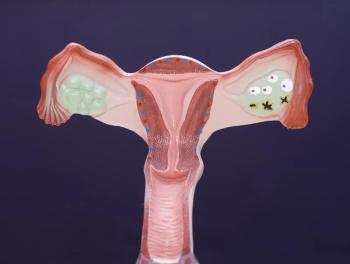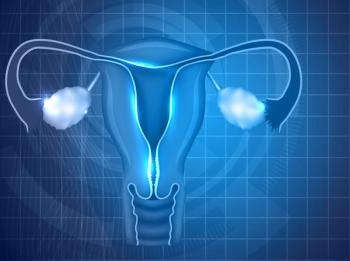
Oncology NEWS International
- Oncology NEWS International Vol 5 No 11
- Volume 5
- Issue 11
Benefits of Tamoxifen Outweigh Endometrial Cancer Risk
An expert panel of nine international cancer researchers and practicing oncologists met in Boston to discuss the past, present, and future uses of antiestrogens in the treatment of breast cancer. The first article in this series, based on the symposium presentations, focused on the optimal duration of tamoxifen use (October 1996). This month, the panel explores the noncancer benefits of tamoxifen, as well as the potential risk of endometrial cancer. The symposium was sponsored by Zeneca Pharmaceuticals.
An expert panel of nine international cancer researchers and practicing oncologists met in Boston to discuss the past, present, and future uses of antiestrogens in the treatment of breast cancer. The first article in this series, based on the symposium presentations, focused on the optimal duration of tamoxifen use (October 1996). This month, the panel explores the noncancer benefits of tamoxifen, as well as the potential risk of endometrial cancer. The symposium was sponsored by Zeneca Pharmaceuticals.
BOSTON-When one balances the benefits afforded by tamoxifen (Nolvadex) therapy against the possible risk of inducing endometrial cancer, "the benefits of tamoxifen on bones, lipids, survival, and the reduction of contralateral breast cancer far outweigh the risks from endometrial cancer," Vasilios Assikis, MD, of Northwestern University, said at the tamoxifen roundtable.
Although tamoxifen is a potent antiestrogen, it also has an "estrogenic tickle" that produces positive effects on bone density and lipid levels, noted V. Craig Jordan, PhD, DSc, roundtable chairperson and director of the Robert H. Lurie Breast Cancer Research Program at Northwestern.
Providing Support for Bones
In a double-blind, placebo-controlled trial conducted in the mid-1980s involving 140 postmenopausal women with node-negative breast cancer, Dr. Jordan and his then-colleagues in Wisconsin found that adjuvant tamoxifen (20 mg/day for 2 years) maintained bone density in the lumbar spine (as determined by dual-photon absorptiometry).
These results were confirmed in 1993 by Australian researchers, who also showed that tamoxifen maintained bone density in the femoral neck. "So this added to the notion that women who had a propensity to osteoporosis could get support for their bones from anticancer therapy," Dr. Jordan said.
A recent 2-year study from Copenhagen again demonstrated that lumbar spine bone density remains stable in tamoxifen-treated women but decreases in controls, he added.
The favorable influence of tamoxifen on bone density proved so intriguing, Dr. Jordan commented, that it has spawned development of an entire class of drugs aimed at preventing osteoporosis and currently in clinical trials.
The Lipid Story
As to tamoxifen's effects on lipids, after reviewing nine clinical trials, Dr. Jordan and his colleagues concluded that "there is no doubt that tamoxifen has a beneficial effect on lowering cholesterol." Their 1996 review, published in the Cancer Journal, showed an average drop of 13% in overall cholesterol levels in tamoxifen-treated women, along with a 19% decline in low-density lipoprotein (LDL) levels but no change in high-density lipoprotein (HDL) levels.
These lipid studies formed the basis for later trials examining the impact of long-term tamoxifen therapy on cardiovascular disease, Dr. Jordan said.
In the randomized Scottish trial, 5 years of tamoxifen therapy, begun at first breast cancer recurrence, halved the rate of fatal myocardial infarctions in post-menopausal women. Only 10 lethal heart attacks occurred in the 200 tamoxifen-treated patients, compared with 25 fatalities in the 251 patients in the observation arm--a "remarkable difference," Dr. Jordan said.
Endometrial Cancer Risk Exaggerated
Dr. Assikis pointed out that much of the concern over endometrial cancer and tamoxifen dates back to a 1993 case-control study based on data from the Yale-New Haven Tumor Registry. The authors concluded that endometrial cancers that develop after tamoxifen therapy are more likely to be high-grade, poor-prognosis tumors.
However, Dr. Assikis' review of all 350 cases of endometrial cancer in tamoxifen-treated patients reported in the world literature led to the opposite conclusion. "The literature is telling us that the endometrial cancer that does occur in tamoxifen-treated patients is a low-grade, low-stage disease," Dr. Assikis said.
Richard Barakat, MD, concurred, noting that the Yale-New Haven Tumor Registry study, with only 53 patients, was very small, and only 15 of the patients had received tamoxifen. "A few more cancers in either group could have swayed the results either way," he said.
A review performed by Dr. Barakat and his colleagues at Memorial Sloan-Kettering Cancer Center revealed that most of the endometrial cancers that develop in tamoxifen-treated women are grade 1 or 2 lesions. Moreover, the death rate from endometrial cancer in breast cancer patients who have received tamoxifen therapy--15%--is the same as would be expected for all endometrial cancers.
"We can conclude quite clearly that tamoxifen-associated endometrial cancers do not have a worse prognosis, do not seem to act more aggressively than garden-variety endometrial cancers," Dr. Barakat said.
No Link to Increased Duration
Dr. Assikis' review found no link between daily tamoxifen dose or duration of use and endometrial cancer. "Contrary to what some investigators have argued, we don't see a huge increase in the frequency in reports of endometrial cancer with duration longer than 2 years," Dr. Assikis said.
He also pointed out that a woman's relative risk of developing endometrial cancer while taking tamoxifen is low, with an estimated two to three endometrial cancers per 1,000 woman-years of tamoxifen use.
Dr. Jordan added that many of the endometrial cancers reported in tamoxifen-treated patients appear to be preexisting tumors, and that some of the increased endometrial cancer risk seen with tamoxifen use may be the result of a "detection bias."
Because physicians are more aware of the increased risk of endometrial cancer in women taking tamoxifen, he said, they may be more aggressive in screening for and detecting these cancers.
Of 16 endometrial cancers found in a tamoxifen study reported in 1993, he said, 12 occurred in women who had taken the drug for less than 2 years, suggesting either preexisting disease or an uncommonly short latency period.
Comparing the absolute numbers of cases of uterine cancer, cardiovascular disease, and contralateral breast cancer helps place the benefits-to-risks ratio of tamoxifen use in perspective, commented Joseph Ragaz, MD, of the University of British Columbia School of Medicine, Vancouver.
"Because the incidence of uterine cancer is low, the overall number of mortalities from uterine cancer is also fairly low," he said. "So even if this number were doubled by tamoxifen use, the absolute numbers would still be fairly low and the increased risk of death from uterine cancer small."
However, he continued, "the absolute numbers of mortalities due to cardiovascular disease and contralateral breast cancer are very high. So even a modest reduction in mortality risk from these conditions, with use of tamoxifen, may result in a very high absolute number of saved lives."
Articles in this issue
about 29 years ago
Factor Analysis of New Symptom Scale in Breast Cancer Finds Six Clustersabout 29 years ago
AIDS Funding Increased for Fiscal '97about 29 years ago
'Cancer Rates and Risks' Availableabout 29 years ago
New Breast Cancer Patient Resource Is Availableabout 29 years ago
Short-Term Metronidazole not Linked to Cancerabout 29 years ago
Various Capitation Models Are Available for Oncology Networksabout 29 years ago
NCI Urges full Disclosure of Cigarette Contentsabout 29 years ago
Antifungal Resistance on the Increaseabout 29 years ago
Fentanyl Patch Useful Alternative in Cancer Pain Patientsabout 29 years ago
Analysis of Microvessel Density Predicts Extraprostatic SpreadNewsletter
Stay up to date on recent advances in the multidisciplinary approach to cancer.

















































































